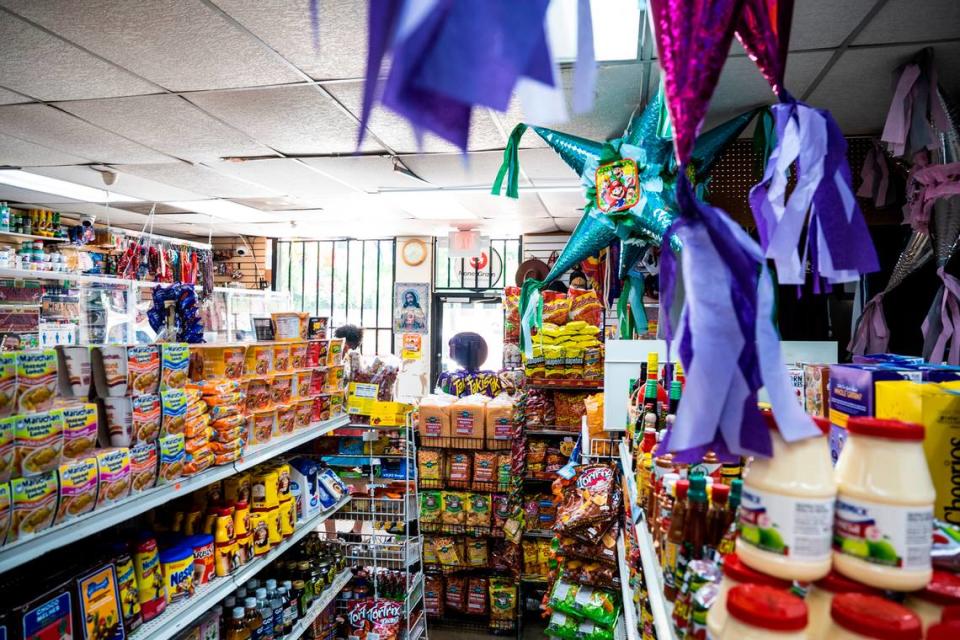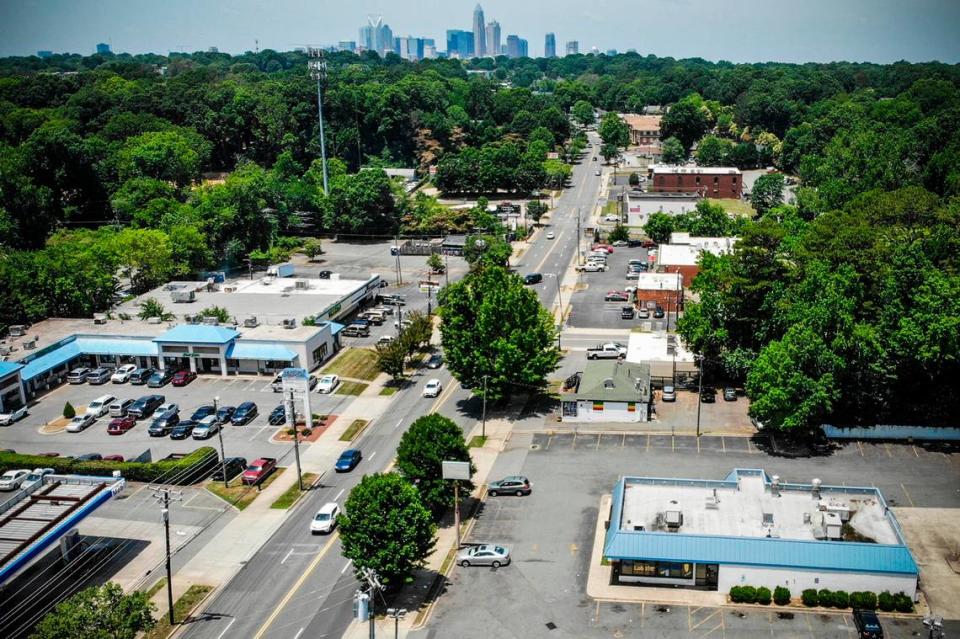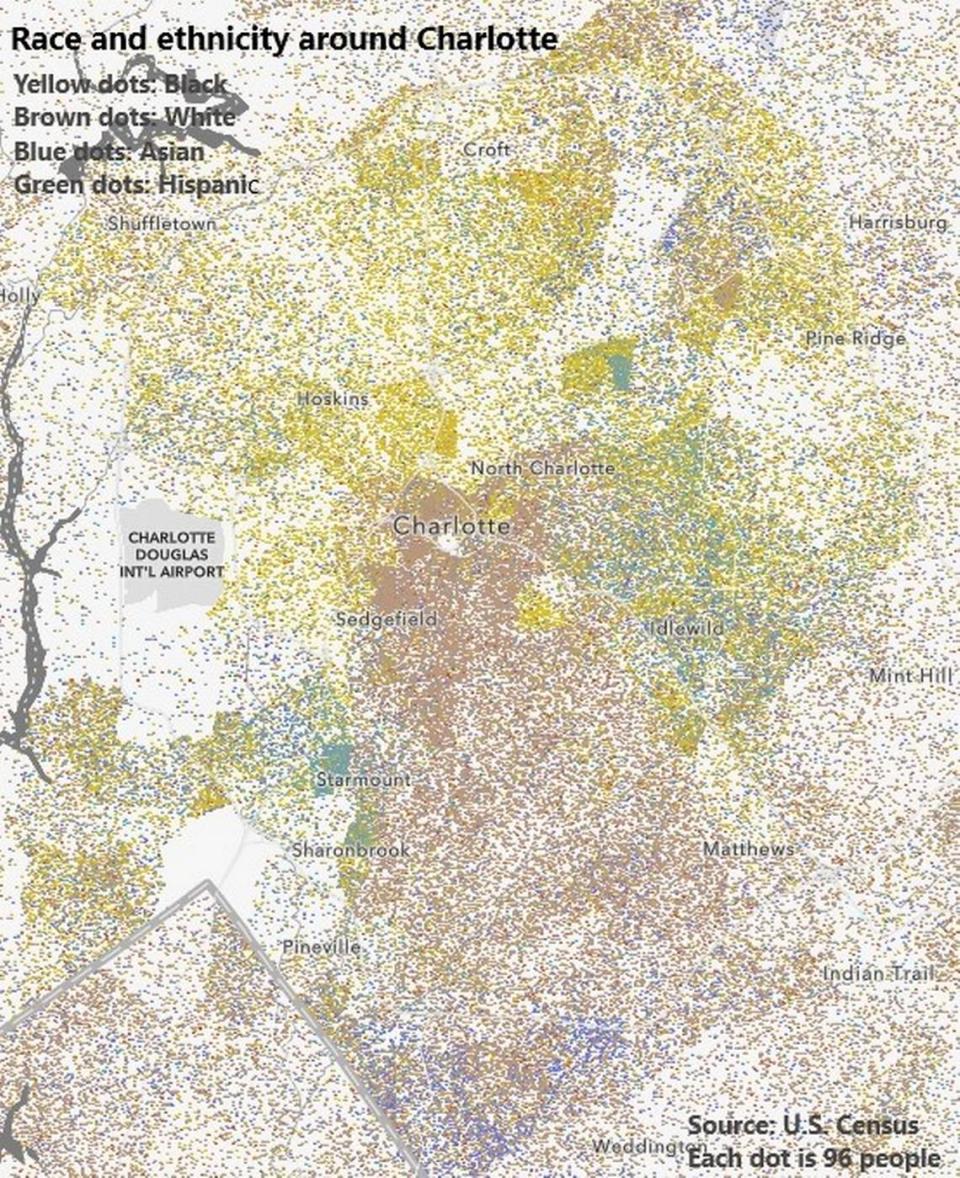The Charlotte region’s Mexican population boom, and other takeaways from new census data
In the midst of Hispanic Heritage Month, the U.S. Census Bureau released some timely data — the most detailed look to date about the Charlotte region’s Hispanic population, including more than a dozen new regions or countries of origin for the first time.
That was thanks to changes the Census Bureau made to expand the decennial count in 2020. It helped widen the lens on the nation’s diversity in capturing people’s heritage.
The eight-county Charlotte region increased its Hispanic population by 50% since 2010, landing at more than 270,000 people.
Here are five other things we learned about the Charlotte region’s Hispanic population from the data:

Where the Hispanic population lives
Much of Mecklenburg County’s Hispanic population, including many of its Mexican residents, lives in east or southwest Charlotte, a data analysis of census records by The Charlotte Observer found.
For instance, the east Charlotte area near North Tryon Street and Rocky River Road, is 24% Mexican. Not far away, the area around The Plaza and East W.T. Harris Boulevard is 22% Mexican.
And the Windsor Park area, near Central Avenue and North Sharon Amity Road, is 13% Mexican.

The Mexican population growth rate
In fact, people of Mexican origin comprised the largest group of the region’s Hispanic population, mirroring a national trend.
The Charlotte area’s Mexican population increased by 27% from 2010 to 2020, with the region adding some 26,000 residents of Mexican origin during that time, census data show.
In all, the eight-county region, stretching from York County, S.C., to Iredell County, is home to 122,000 residents of Mexican origin.
Mecklenburg County has the most Mexican residents, with 55,200 — a population roughly the size of Kannapolis. The county saw a 21% increase in its residents of Mexican origin in 2020 from the prior census.
But York County saw the biggest percentage increase. It’s Mexican population increased by 43%, jumping from 4,900 to more than 7,000, data show.
Increases in the Mexican populations in Iredell, Gaston, Union and Cabarrus counties all jumped by more than 30%. Lincoln County saw the smallest increase in its Mexican population, with a growth rate of a little more than 6%.

People from Central American and Caribbean countries
Residents with origins from Central American and Caribbean countries also saw a marked increase in Mecklenburg County.
Between 2010 and 2020, the county’s Guatemalan, Honduran, Cuban, Puerto Rican and Dominican populations all more than doubled, with its Dominican population jumping the most, at more than 210% to 8,700 people.

New countries to the count
And for the first time, the census counted people with origins of other Central and South American countries. Those include Venezuela, Argentina, Bolivia, Chile, Panama and Uruguay.
Mecklenburg reported some 1,100 Panamanian residents and nearly 400 residents with Uruguayan origin.
Venezuelan growth around Charlotte
Nationally, the Census Bureau said that the Venezuelan population grew the fastest of all detailed Hispanic groups, increasing 181% since 2010.
In the Charlotte region, the Venezuelan population tops 5,000.

